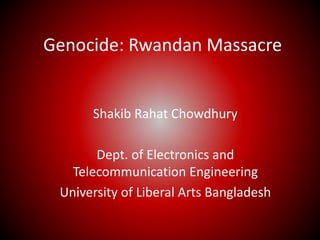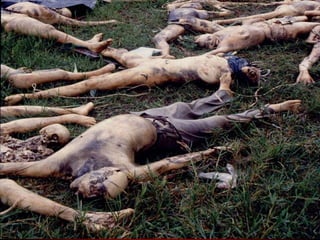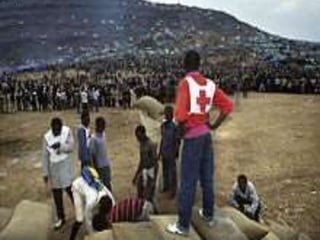The document summarizes the Rwandan genocide that occurred in 1994 where Hutu extremists killed an estimated 500,000 to 800,000 Tutsi and moderate Hutu civilians over the course of 100 days. It provides background information on Rwanda's ethnic groups and the tensions between Hutus and Tutsis that built over decades. It describes key events that triggered the genocide such as the assassination of Rwanda's president and the methods used in mass killings and rapes across the country. International response to the genocide is characterized as slow and inadequate.















































































